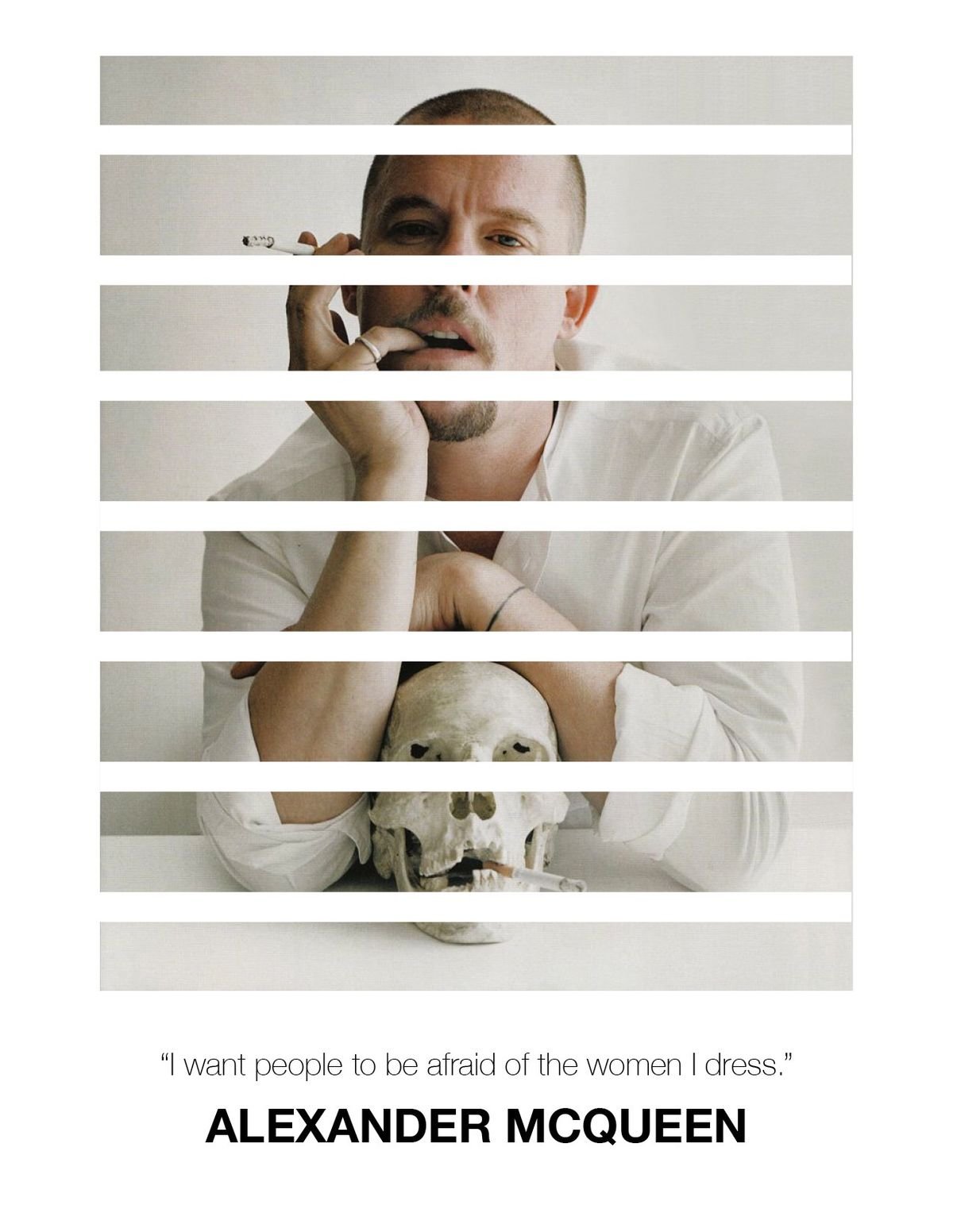
Alexander McQueen’s Spring/Summer 2001 show: VOSS
The Ask
Choose a fashion show from the last 20 years and write a research paper analyzing themes, design choices and aesthetics.

Why Alexander McQueen?
Alexander McQueen was credited for pushing boundaries, shocking audiences with gruesome scenes, and innovative technologies to get his message across. Themes that were relevant in Alexander McQueen’s life include mental illness, the natural world, and self examination.
Process
Alexander McQueen’s Asylum
Through thorough examination of the clothing, it can be attested that the collection brings awareness to mental illness, nature, beauty, and self reflection. By 2001, designer Alexander McQueen had made a significant name for himself in the fashion industry and his spring/summer 2001 collection has been labeled a heterotopia. The show provoked feelings of claustrophobia, chaos, and unsettlement which reflected the year 2001 and McQueen’s personal life. VOSS disrupted the fashion industry and stirred conversation which is why I chose this production.
“The shells had outlived their usefulness on the beach, so we put them to another use on a dress. Then Erin came out and trashed the dress, so their usefulness was over once again. Kind of like fashion, really.”
Nature and Self Reflection
The color pallette was mostly neutral and earthy with only the brightest reds saved for the more dramatic pieces. Animals taxidermy, feathers, and plants were used in the collection to bring nature into the asylum looking setting
The muted color swatches embodied the entire collection which reminds the audience of nature through the use of foliage, feathers, and razor clam shell incorporations. Self reflection was referenced in many ways through reflective materials and animal symbolism.
Body Image & Acceptance
The early twenty first century was faced with sexism, unattainable beauty standards, and inequality; although, McQueen acknowledged all of those points with this show. Early 2000s beauty standards were notoriously harsh and consisted of a tall, very slender, but toned frame which all of the models in the show attained.
Author Caroline Evans wrote about the show in her book Fashion on the Edge and credits McQueen for turning the audience into objects, “turning their own sharp scrutiny of the models back on themselves...”
The audience was shocked with the psychiatric ward setting, delusional looking models, and taxidermy mounds. The audience quickly realized that the models could not see out even though they were being watched.
Mental Health
Models wore bandages around their heads that simulate the violent practices in mental institutions and scrutiny of the patients. Treatment of this kind results in deep humiliation and shame, especially for people in the spotlight such as McQueen himself. Every model sported a bandaged head while strutting down the runway in blazers, feathered gowns, and slacks.
McQueen himself suffered greatly as his fame rose which resulted to depression, body dysmorphia, anxiety, and addiction.
Red painted glass microscope slides make up the fitted, high neck, sleeveless bodice of the dress to replicate how we all have blood underneath our skin.
Joel-Peter Witkin’s work Sanitarium (1939)
Prior to the start of the show, the audience sat outside a dark cubed space staring at their reflections in a mirror with the sound of a heartbeat playing for almost two hours. Then, the large box lit up and models began stumbling in. Throughout the show, a smaller cube sat in the middle of the production space unopened until the end when a plus sized model, who was fetish writer Michelle Olley, posed as Joel-Peter Witkin’s Sanitarium (1983).
“It was about trying to trap something that wasn’t conventionally beautiful to show that beauty comes from within”- Alexander McQueen
〰️
“It was about trying to trap something that wasn’t conventionally beautiful to show that beauty comes from within”- Alexander McQueen 〰️
The nude figure was among dead insects and live moths to prove that beauty can be everywhere, in all shapes and sizes. McQueen attested; “It was about trying to trap something that wasn’t conventionally beautiful to show that beauty comes from within” (Victoria and Albert Museum, 2015, para 8).
The moths can be just as beautiful in nature as the butterflies.
Skills



















